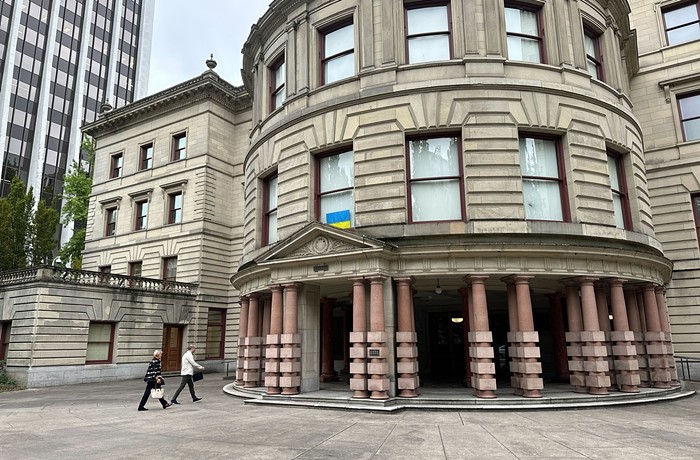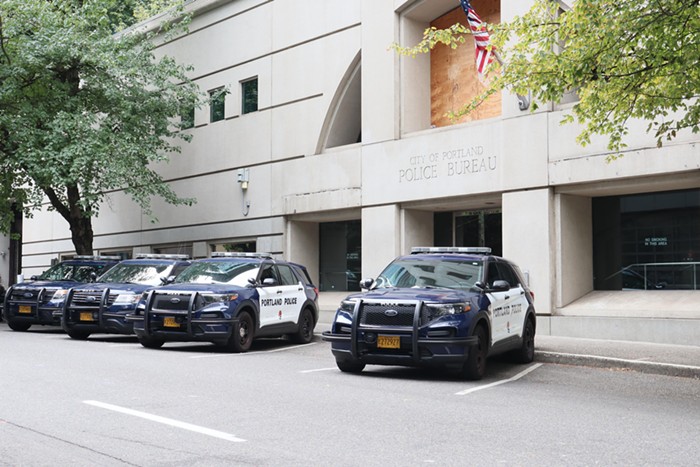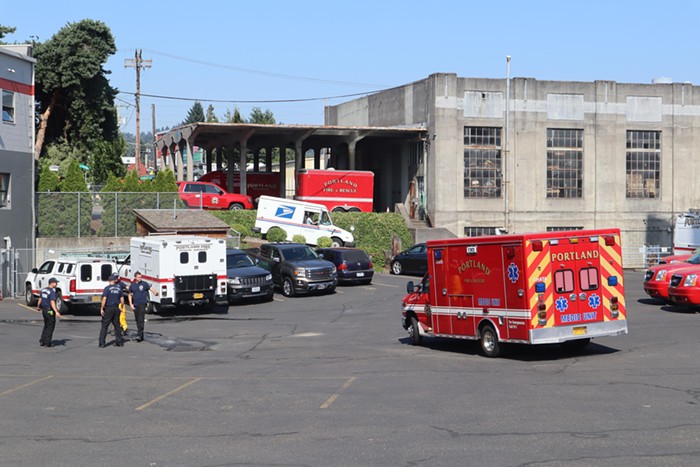ON VETERANS' DAY, a dozen young guys freed from school for the holiday politely lined up around a patch of dirt where SE Brooklyn hits the Union Pacific rail line, watching each other grind on the city's newest mini skatepark.
The new Brooklyn Street Skate Spot isn't on the city's 2005 "Skatepark Master Plan"—a map of 19 skateparks planned across Portland. That's because neighbors and skate supporters from all over the city built the park themselves, DIY-style, pouring the concrete in July without a permit.
But with the city strapped for cash, DIY infrastructure may be the best way to go when it comes to realizing the aims of that plan—and, in this case, transforming a neighborhood eyesore into a resource.
The "gnarly piece of land" that's now home to the Brooklyn Street Skate Spot was a derelict patch of dirt where people used to sleep, drink, and shoot up under a barbed wire-covered pedestrian bridge that crosses the train tracks, says neighbor and park mastermind Colin Sharp. Technically, the land is a city-owned right of way that Union Pacific is supposed to be responsible for maintaining.
Sharp, 38, lives up the street and is a long-time skater who had been eyeing the spot for years before finally deciding to call the city last summer about turning it into a skatepark. But finding public money and working out the relationship between the city and the railroad proved complex. Instead, Sharp and friends got tacit city approval—in the form of nonprofit sponsorship from neighborhood group Southeast Uplift—and raised over $2,000 in donations and started pouring cement. When they scraped off the top layer of dirt at the spot, Sharp says his volunteer crew pulled out 30 needles.
These days on the site, a shallow, curved concrete bowl no more than 10 feet across encircles a comically small pine tree. Rules for respecting the park and neighbors are hung on the side of the metal pedestrian bridge.
Not everyone was happy with the new skatepark popping up. Mike Nahorney, who has owned Advance Electric Motors just up the block for 23 years, was so worried about liability issues if he bought the lot bordering the park that he contacted Portland Police Officer Robert Pickett. Nahorney and Sharp met with Officer Pickett for mediation, and Nahorney now says he's not against the park, but is upset they didn't go through "proper channels" before building in the public right of way.
Portland has a proud tradition of non-permitted skateparks—the illegally built Burnside Skatepark celebrated its 20th anniversary on Halloween. But neither the Burnside park nor Brooklyn Skate Spot are considered permanent structures; despite their concrete nature, the city could legally tear them down at any time. And the new park's days may truly be finite: TriMet's current design for the planned Milwaukie light-rail line would annihilate the Brooklyn Skate Spot in about 2014, if it goes through as planned.
Mark Conahan is one of the activists who helped push through the Skatepark Master Plan, which sets up a formal process for building new parks. But he also says working outside the system to build neighborhood skate spots is a great idea. "It's so much more complicated doing it through the city and having the city raise the money, so in that way we're very much behind the grassroots idea," says Conahan, whose group Skaters for Portland Skateparks donated $1,000 to the Brooklyn project.
Nineteen-year-old Rocco Caravelli woke up at 8 am to beat the crowd at the new spot. He prefers the minuscule neighborhood park to the more spacious but intimidating Burnside. "The city doesn't seem like it has a lot of money, so if there's sanctioned skate spots, that's great," says Caravelli. "Skateboarders want to conquer all terrain."



















